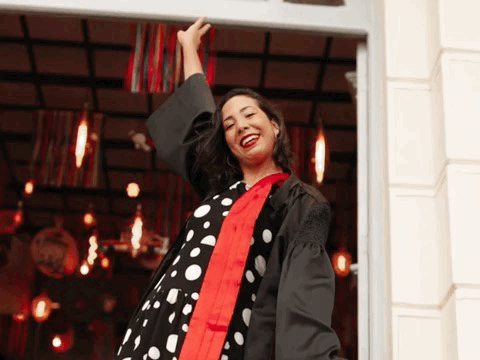The Portrayal of Femininity Throughout the Ages: Being “all” of the girls
Written by Babi Cardoso • Edited by Rachel K Zhang
I grew up being the “smart girl”. The girl who sits in the front row, gets good grades, and doesn’t care about silly things for empty minds. So, this meant that I wasn’t expected to dress up or wear make-up, because those things were for “the pretty girl”. That girl could be vain and look girly, though nobody expected her to say something intelligent. She doesn’t have to — she is already pretty, so why should she ever need to develop a skill or personality?
As a 25-year-old millennial, I can’t help but notice how pop culture cemented this idea in my mind — that to thrive in this world as a woman, femininity is something you had to run away from. And this is really messed up. So to start deconstructing this, I jumped back to identify where it came from, and if and how it can change.
In the 1980’s the public imagery of a strong woman was mainly represented in Ellen Ripley from Alien and Sarah Connor from Terminator 2. They were strong because they were masculine, sweaty, and hardcore like army men.
In the early 90’s we got the cool girl: think Kate Hudson in “How to Lose a Guy in 10 Days”. The laid-back woman who wants to be taken seriously and dissociate herself from things that don’t matter like fashion, and write about real things like politics.
Later on in the 2000s, we can recall one of Taylor’s Swifts first big hits, You Belong with Me. The lyrics “she wears high heels, I wear sneakers” imply that the best choice should be the girl who distances herself from symbols of femininity. Because as a society, we were taught that those diminish your potentiality, thus making you stupid.
I do think that’s been a change in the 2010s though. I noticed that with the huge success of teen romantic comedy To All the Boys I Loved Before in 2018, where girly girl protagonist Lara Jean who cares about fashion and romance doesn’t subsequently have her value or intelligence diminished.
Personally, I began to deconstruct the old, twisted idea of femininity as I got in touch with Asian culture, particularly K-pop and dramas. I saw how beauty and self-care is always portrayed in powerful women without being a prominent plot line or how masculinity is redefined with men using make-up and being vain. This allowed me to get more in touch with the feminine side I loved but tried to hide in order to feel respected.
Suddenly I wasn’t as afraid of anyone noticing I had make-up on or if I owned too many things in pink.
Feminine symbols shouldn’t be the opposite of empowerment — they should blend together. And I’m not saying that girls shouldn’t like sports or video games, but they shouldn’t like it in order to “not be like the other girls”.
Because you know what? Other girls are amazing. They are pretty, smart, talented, funny, and the most diverse. So strap on the high heels, sweat at the gym, load up a Nintendo console, put on some make up. And feel confident in knowing that no matter your femininity, you can still be all of the girls.**
About the author: Babi is an internationalist that specializes in culture and language, working in an international business company based in China. She’s passionate about Asian-Pacific relations and popculture.
This FRIDAY, Feb 4th, embrace your femininity at our first event of 2022 — A FULL GLAM 2022 Vision Board Party! Alongside a mini goal-setting workshop and vision board creating session, we will be dressed up head to toe, with bubbles and photographers on stand by 🥂 Organized with www.iamablemonyela.com











